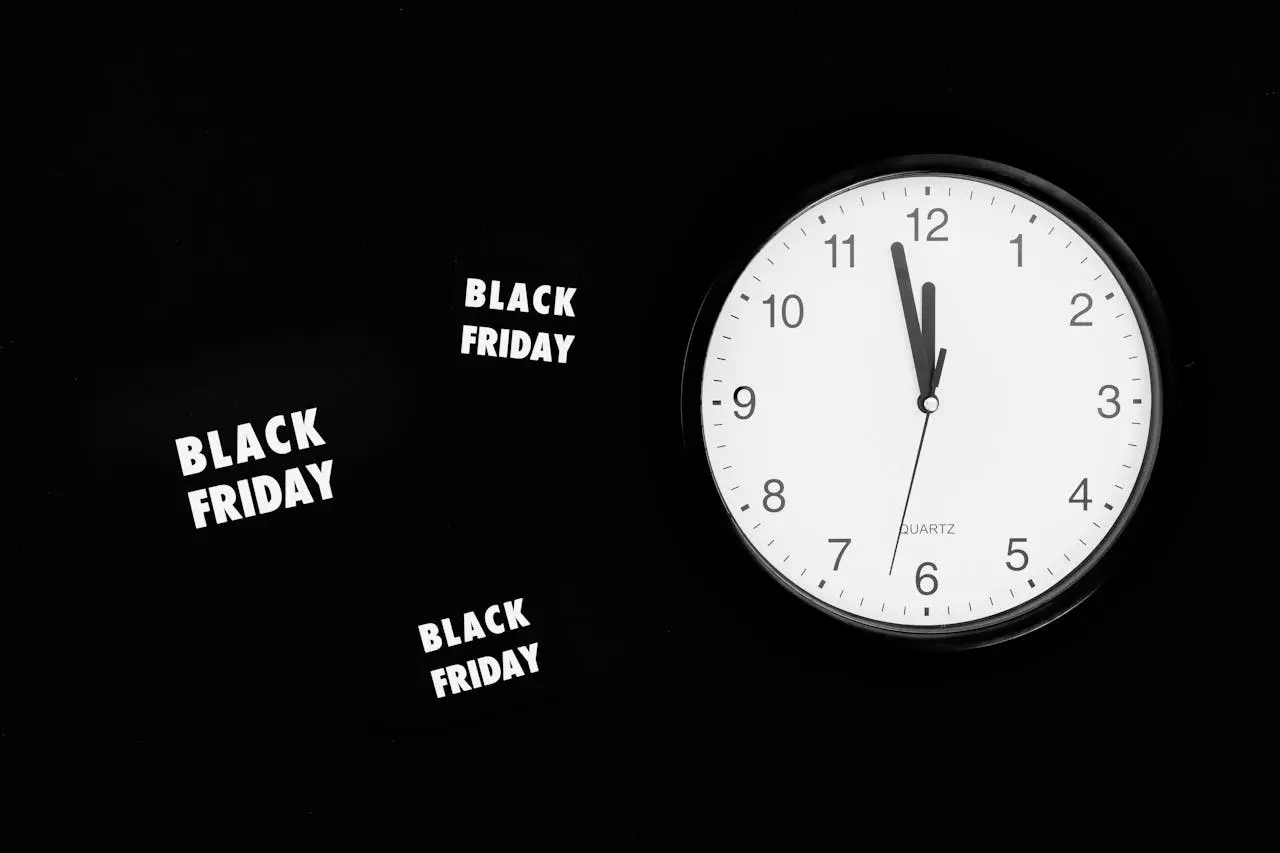Would you like to launch an influencer marketing campaign? Do you want to know if your collaborations with content creators are generating authentic engagement, qualified visibility, or even sales? Between storytelling, fickle algorithms and human interaction, how do you set the right benchmarks to judge the performance of a partnership?
That’s where influencer marketing KPIs come in! Here, we’re not talking cold numbers, but living indicators, capable of translating the real impact of a message in a community.
With 10 years’ experience in affiliate and influencer marketing, Casaneo offers you this comprehensive guide to KPIs specific to the world of influencer marketing.
Why are KPIs so important in influencer marketing?
First of all, it’s important to understand that influencer marketing has evolved from an awareness tool to a performance lever. Brands and online stores use this marketing channel to achieve concrete results: traffic, conversions, sales and leads.
Analyzing the right interaction and conversion signals in the influencer universe is now essential for steering investments, comparing influencer profiles and fine-tuning the emotional and behavioral targeting of future activations.
But here’s the thing! Not all marketing KPIs are created equal. Some measure visibility, others engagement or conversion. The key is to choose the right one for your objectives.
Here, then, are the main KPIs specific to influencer marketing that you need to track if you want to launch or optimize a campaign.
What are the main KPIs for influencer marketing?
In the highly competitive world of influencer marketing, metrics aren’t limited to impressions or likes. This channel requires more nuanced indicators, capable of reflecting reach, engagement and above all the quality of the relationship between the influencer and his or her audience.
Here are the main KPIs to track in influencer marketing to manage your campaigns effectively.
Visibility KPIs in an influencer campaign
Obviously, before talking about actions or sales, you need to know whether your campaign has been seen. To measure the reach of your content, here are the recommended indicators:
- Reach: the number of unique accounts exposed to the content. The higher the reach, the larger the audience the influencer reaches. This KPI is useful for awareness campaigns.
- Impressions (total number of displays including repeats). Here you can see how often a message is displayed.
- The number of views, very important for video formats (on TikTok, Reels or YouTube Shorts). Long views (over 3 seconds) indicate real attention.
- New subscribers generated as a result of the campaign. Well thought-out campaigns can generate a spike in subscriptions. This is a good indicator of interest in the brand or product.
Tip: compare actual reach with the influencer’s community. A good reach rate = an engaged community.
Truly relevant engagement metrics
Remember, too, that a good post is more than just a scroll. It’s about interaction, commentary and sharing.
Want to assess your audience’s real impact? Analyze :
- Engagement rate (likes + comments + shares + saves) ÷ reach × 100. You’ll know whether your content has provoked an emotional or intellectual response.
- The quality of comments. Here, favor detailed or enthusiastic feedback (“I’m going to buy it!”, “I love this concept!”) rather than simple emojis.
- The rate of shares/saves (strong signals of interest). Shared content is often perceived as useful or inspiring.
- The number of responses to a story. Stickers (polls, sliders, Q&A) are good tools for creating a direct link. Measure how many people interact.
Tip: cross-reference this data with the type of content published (UGC, tutorial, storytelling) to identify the formats that generate the most engagement.
Conversion KPIs in influencer marketing
This is where the concrete performance of an influencer campaign comes into its own. Do you want to sell, get leads, generate traffic? Here are the behavioral indicators to keep a close eye on:
- Click-through rate on tracked links. If you place a link in a bio, story or swipe-up, see how many people click on it. This measures purchase or discovery intent.
- Post-click conversion rate. Once a click has been made, how many people have actually bought, booked or filled in a form? This indicator is the key to judging traffic quality.
- The number of sales generated. Tracking via an affiliate link or promo code makes it possible to precisely attribute conversions to each influencer.
- CPA (cost per acquisition). This is the total amount invested in the campaign ÷ number of conversions. It can be used to compare the profitability of different influencers.
- Campaign ROI (sales generated ÷ campaign budget). An ROI greater than 1 means that the campaign is profitable.
Tip: create a comparison chart by influencer to identify the best profiles (and avoid those who cost a lot for little results).
Qualitative KPIs in influencer marketing
Let’s face it, numbers don’t tell the whole story. In an influencer campaign, there are elements that can’t be measured in an Excel spreadsheet… but that make all the difference.
- Alignment with brand values: is the content consistent with your world, your commitments, your tone?
- Respect for the brief: is the key message properly relayed? Are the mandatory mentions present (e.g. #sponsored)?
- The quality of the content produced: aesthetics, storytelling, originality… Can this content be reused in other channels (ads, email, website)?
- The general feeling in the comments: analyze whether the content generates enthusiasm, envy, confidence or… criticism.
- The influencer’s responsiveness and professionalism: does he or she respond to comments? Does he meet deadlines? Does he provide the requested statistics?
Tip: after each campaign, carry out a subjective mini-evaluation internally to enrich your numerical analysis.
How do you collect and analyze data efficiently?
Of course, all this data needs to be collected and, above all, analyzed. For this, there’s no shortage of tools. But they have to be used properly.
To track your influence KPIs, you can rely on :
- Custom UTMs. Integrate them into links to precisely track traffic origin in Google Analytics.
- Dedicated promo codes are very useful for measuring offline sales or sales over a defined period.
- Influencer platform dashboards, such as Casaneo, which offer automated la reports with key KPIs (reach, engagement, clicks).
- Site analytics tools (Google Analytics, Shopify, WooCommerce…) to cross-reference traffic + conversion data.
Tip: create a standard tracking table with the same signals for all your campaigns. This facilitates comparisons over time.
How to choose the right influencer marketing KPIs for your objectives?
Not all influencer objectives can be measured in the same way. It’s important to associate each intention (visibility, engagement, conversion…) with indicators adapted to the role played by the influencer in the purchasing or decision-making process.
Objective: gain visibility
- Total campaign scope
- Cumulative impressions on all content
- Number of long video frames
Objective: engage the community
- Average commitment rate
- Number of comments per publication
- Answers to interactive stories
Objective: generate sales
- Clicks on tracked links
- Number of sales by promotional code
- Post-click conversion rate
Objective: generate leads
- Newsletter subscriptions via a UTM link
- Request a quote or contact us
- Lead magnet downloads (white paper, e-book…)
Tip: for each objective, define a primary KPI and 1 or 2 secondary ones. This will help you stay focused on the essentials.
How to optimize your influencer marketing strategy using KPIs?
Apart from tracking performance, having so much valuable data at your disposal also offers you an undeniable advantage. Using this key data, you can adjust your strategies in real time, optimize investments and improve the impact of influencer campaigns.
Use data to refine your selection of influencers
Past campaigns are real gold mines. Thanks to the data collected, you can refine your choices and avoid starting from scratch with each collaboration. You can also use this information to :
- Compare past performance. Who generated the best engagement, click-through or conversion rates?
- Identify the most responsive communities. Some audiences are more sensitive to style, tone or format.
- Analyze the cost/impact ratio. Did a well-paid profile really generate a commensurate ROI?
Tip: adopt a data-driven approach right from the sourcing stage. Combining quantitative data with editorial affinities maximizes your chances of success.
Shape more impactful content with campaign feedback
The performance indicators for your published content give you a clear idea of what’s working… and what’s not:
- Which formats work best (reels, carousels or stories)? Every audience has its own preferences.
- What tone to adopt (humor, storytelling or pedagogy)? KPIs guide you towards the right balance.
- How often should I publish? Certain days or times generate more interactions.
Tip: leave intuition to one side and use KPIs to tailor your content.
Distribute your influence budget intelligently
Your key indicators also help you to manage your investments more effectively. By analyzing past performance, you can :
- Compare platforms: TikTok, Instagram, YouTube… performance varies according to objectives (visibility vs. conversion).
- Adapt your remuneration model (fixed remuneration, performance-based commission or mixed model)
- Take seasonality into account. Certain times of the year (back-to-school, holidays, sales) generate better performance, depending on the sector.
Tip: review your budget every 3 months to adjust your efforts in real time.
Test, measure, adjust: the virtuous optimization loop
Key influencer marketing data are also the best allies for experimenting and validating new ideas.
- Perform A/B tests of formats or messages to identify what converts best.
- Evaluateincrementality. How much of the results actually come from influence?
- Explore new terrain. Test out new platforms like Twitch or BeReal before going general.
Tip: include a test phase in all your campaigns to stay one step ahead.
Influencer marketing KPIs still too often forgotten… but essential
When we talk about KPIs in influencer marketing, of course we immediately think of reach, likes or clicks. However, there are a whole series of indicators that are often overlooked, but which can make all the difference when analyzing a campaign.
Yet these “forgotten” signals answer very real questions that brands and e-tailers ask themselves on a daily basis: influencer reliability, content quality, indirect spin-offs and long-term thinking.
Here’s an overview of the indicators you shouldn’t overlook.
How to spot misleading KPIs and detect engagement fraud?
Remember that in the jungle of influence, not every number is a good number. Some influencers artificially inflate their stats: follower purchases, automated likes, fake comments…
To avoid unpleasant surprises, keep an eye on :
- Inconsistent commitment rates
- Sudden subscriber spikes or ghost followers (inactive accounts or foreign accounts with no connection to your target).
With tools like HypeAuditor or Modash, you can scan audiences and detect suspicious behavior.
Tip: before any collaboration, cross-check the figures with a detailed audience analysis. A good look doesn’t always make for an effective campaign.
What are the right influence KPIs for a micro-influence campaign?
Would you like to launch a campaign with micro-influencers? Micro-influencers don’t have millions of subscribers… but often a much more engaged and loyal community. Their KPIs should therefore be read differently. Rely on :
- A high rate of engagement
- Sincere interactions
- Qualified traffic, even if more modest.
Also consider the quality of the content produced, which can be authentic, useful and perfectly reusable elsewhere.
How long does it take to measure results?
Above all, don’t panic if the results aren’t in within the hour. Each KPI has its own timeframe. Views, likes and comments arrive quickly, but clicks, conversions or organic fallout often unfold over several days, or even weeks.
It is important to leave a wide enough analysis window, depending on the objective:
- Visibility and engagement indicators are visible within 24-48 hours.
- Conversion signals should be tracked over 7 to 30 days.
- Long-term KPIs (e.g. awareness, indirect returns) should be analyzed after several campaigns or months.
Tip: define a monitoring schedule for each type of KPI from the outset. This avoids too hasty… or too late assessments.
What KPIs should you monitor in a UGC (user-generated content) campaign?
Is your objective to retrieve qualitative content (tutorials, customer reviews, demonstrations, etc.)? The right KPIs for influence are not necessarily clicks or immediate sales.
Take an interest :
- The amount of recoverable content for the brand.
- Content reuse rate (on ads, newsletters, website).
- To the average commitment per format.
- Qualitative feedback on content in comments.
Tip: classify content by theme and reuse it in your paid campaigns. This content is often perceived as more credible than your own ads.
How do you measure the impact of digital word-of-mouth?
And don’t forget that not all benefits come from a tracked link! A well thought-out campaign can generate numerous spontaneous mentions, Google searches and online conversations.
To measure this “positive noise”, analyze :
- Brand mentions
- Hashtags used
- Organic shares
- The evolution of direct traffic to your site.
Some tools also measure Earned Media Value (EMV), i.e. the estimated advertising value of spin-offs.
Tip: set up Google or Mention alerts to track the appearance of your brand after a campaign. The most striking results are sometimes the ones you don’t expect.
Can you benchmark your KPIs against those of your sector?
Of course, you’re quite right to want to know if you’re getting good results – in other words, if you’re “in the ballpark”.
Even if each campaign has its own specificities, it is useful to compare KPIs with market averages:
- On Instagram, the average engagement rate ranges from 1.5 to 3% (micro-influencer) and 0.5 to 2% (macro-influencer).
- On TikTok, the engagement rate is around 4 to 7%, depending on the sector.
- The average story click-through rate is generally between 3% and 4%.
- An overall conversion rate of 2-3% indicates good performance.
Tip: keep a record of your previous campaigns to create your own internal benchmark. The important thing is to evolve… not to imitate.
What influencer marketing KPIs should be tracked for long-term collaboration?
Ambassador partnerships are long-term. Here, it’s not just a question of measuring the performance of an isolated post, but of tracking the impact over time:
- Community loyalty
- Evolution of commitment
- Positive feelings about the brand
- Reuse of content
- Regular interactions.
Tip: create an evolving identity sheet for each ambassador, with KPIs tracked month after month. This makes it possible to objectify the value of a long-term relationship.
Harness the full potential of your influence KPIs with Casaneo
In the tumult of social networks, influencer marketing KPIs are your compass. They certainly don’t replace the intuition or creativity of a good partnership. They do, however, enable you to validate your choices, identify what resonates (or doesn’t) with audiences and adjust your campaigns for greater impact.
With 10 years’ experience in affiliation and performance-based influencer marketing, Casaneo is with you every step of the way: sourcing reliable influencers, precise monitoring of key indicators, automated analysis of results and ongoing optimization of your campaigns.
With Casaneo, influence KPIs are no longer just numbers on a chart… but real growth drivers.








